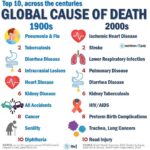

Microblog: Water Usage


Excerpt from @CarnivoreCure:
📖”Meat production is thought to have a high-water footprint, but this depends on how the animal is raised—grass- or grain-fed matters. Even with high numbers, most of the total water (98%) is the water footprint of the feed for animals. Drinking water, service water, and feed mixing water for the animals account for less than 2 percent.
🌾UC Davis Agricultural and Nutritional Sciences estimate that if half the grain the animal consumed were irrigated, it would require 390 gallons to produce one pound of beef. That figure would drop to 105 gallons if the grain were all non-irrigated and would shoot up to 675 gallons if it were all irrigated. ⠀
⠀
🥜Assuming most of the meat is produced with non-irrigated feed, animal foods are still LOWER than the amount of water required to grow nuts. ⠀
🌵If you see the second graphic, much of California’s agriculture is concentrated in the parts of the state that droughts tend to hit the hardest.
💧Water used in the production of meat is much lower than water used to grow nuts. Ninety-nine percent of all U.S. almonds are grown in drought-prone California. One almond requires nearly 1.1 gallons of water.
‼️Much of California’s agriculture is concentrated in parts of the state where droughts hit the hardest. For example, Monterey County—which endured an “exceptional drought”— grew nearly half of America’s lettuce and broccoli in 2012.”
⠀
❓Why does California, a very drought–prone state, grow most of the US’ produce?
⚠️THIS seems like a much more concerning water footprint.
🌱As for plants and their water burden, some may take less water to grow than animals, but the numbers do not consider the total burden of cost, including bringing water to a drought-prone area. (More in @CarnivoreCure)
🚨GMOs won’t feed the world. We won’t have any topsoil left. We’ll leave our future generations with ONLY lab grown food.
🚨Let’s not blame meat for greenhouse gas emissions and the overuse of water. #redherring
⁉️Ask yourself—why are we told not to eat the most nutrient-dense bioavailable foods that give us any chance of optimal health?



















